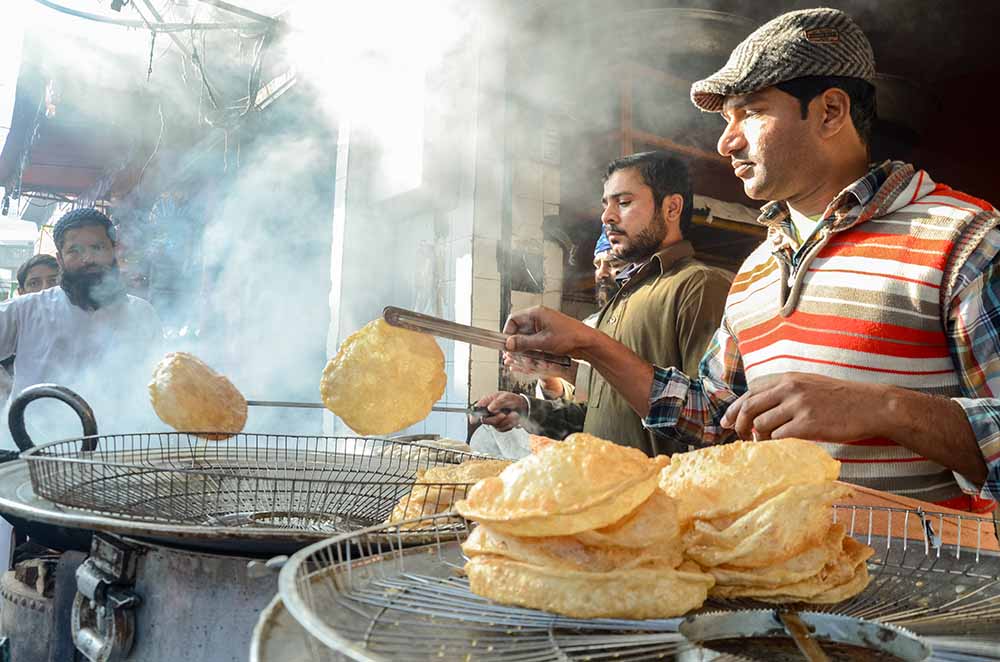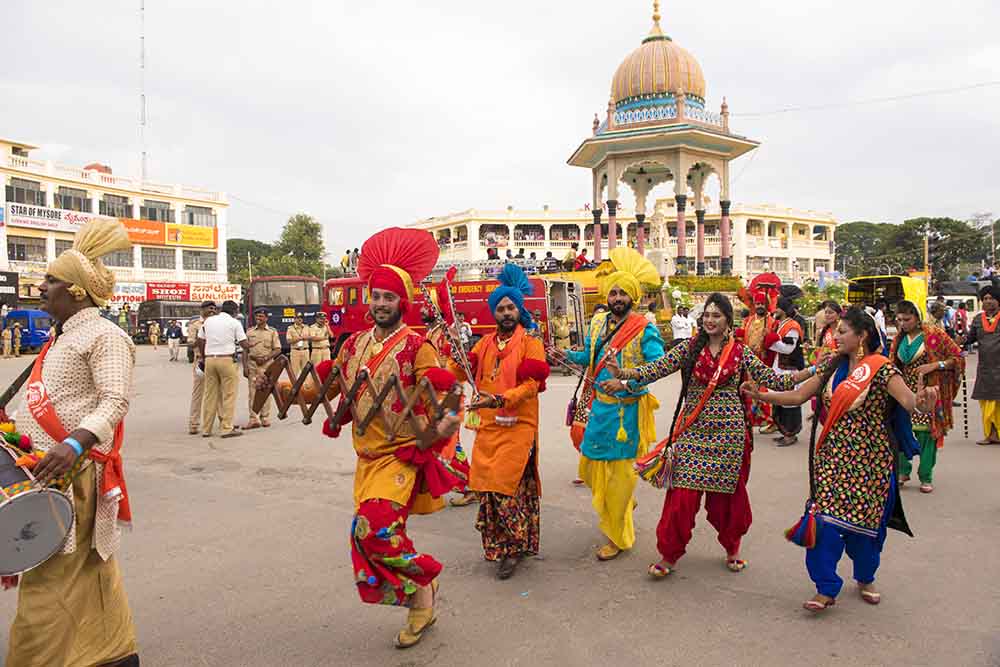Punjab is probably one of the few states in the country that is filled with colours, celebration and emotions to the brim. There are few things that Punjabis take pretty seriously. Some of these things include their music, their farms and their food. Punjabi culture is often quite misunderstood by outsiders. Bollywood has played a major role in people having a serious misconception about Punjabis. No, the Punjabi culture is not at all about Lamborghinis, women or alcohol. If you want a true understanding of the culture of Punjab, visit the place during the festive season. The festive season is when every Punjabi in the state is welcoming to the core. Not that they aren’t already, but during Lohri (the harvest season of Punjab) the feeling of togetherness is on another level altogether.
We know that the people of Punjab love to live their lives large. Let us dive deeper into the tradition of this state of lassi, butter chicken and everything fine. Well, this can be reflected from the behaviours of Punjabis, their dresses, their food, their art and their traditions. But what is it that truly makes Punjabis stand out of the crowd? What is it that makes Punjabis so welcoming? What is it that makes Punjabis the people full of heart and emotion? We intend to help you understand the same throughout the course of this article.
History of Punjab
The geological positioning of Punjab has been a big gateway to the invasions and cultural influences over the country. Punjab has had majority of the Sikh population of the country and is known by the Punjabis. But has seen less of Sikh emperors and has mostly been ruled by Islamic invaders and British rulers. However, the period right before the annexation of the area by the British, the state was made a Sikh centric empire by the Maharaja Ranjit Singh who helped in resurfacing the Punjabi tradition and culture that Punjab is famous for today.
Before the creation of modern states, specifically in the Vedic Age, the region of Punjab was called the Sapt Sindhu or the land of the seven rivers. With time and changes in rule two of the rivers, the Indus and the Saraswati, vanished from the land. But the other five never left and later the land was named Punjab, the land of five rivers. These rivers include Beas, Sutlej, Ravi, Chenab and Jhelum. The name suggests it since ‘Punj’ means five and ‘ab’ means water (river).
Punjab has been a conflicted land in history. Probably that’s what adds the full-of-life-energy to the Punjabis. As for the religious values, the advancement of the Sapt Sindhu brought in different religions to the region. While most of the earlier population was Hindu, the rise of Sikhism kept the Hindu roots but followed their Gurus with unique traditions and a happier way of living that constituted having empathy for all people and helping nature. The Punjabi language does not originate from the Hindi or Urdu languages, as many Indians and young Punjabis think. It actually has its origins in the Sanskrit language, making it an authentic Indian culture.

Punjabi Cuisine
The flavours of Punjab are as vibrant and happening as the Punjabi culture that makes them. The raw earthy taste, the smokiness of the homemade ghee (clarified butter) and the community kitchens that can feed hundreds in one go, that’s what Punjabi food is all about. Everything in Punjab’s food is made without adulteration and has a clearcut flavour that is never too heavy on the tongue, so you eat till you’re satisfied and full. The richness in the food makes it healthy and filling, giving the farming state its raw energy to take care of a vast agricultural landscape.
Punjabi food is chock full of heavy carbs, spongy breads laden with butter and very few dishes that don’t have an extra dash of butter or ghee tadka. Which is why, Punjabis have a healthy heart naturally. The cuisine of Punjab is world famous and even as Indians we can never have enough of it. The cholle bhature, Punjabi samosas, butter chicken, aloo parathas, makke ki roti (corn flatbreads) with sarson ka saag (mustard leaf curry), badam halwa and most of all the refreshing and energising drink lassi. Punjabis love to cook various kinds of chicken dishes, which would need just steamed rice or a couple of rotis to make it a charged-up meal. This special treatment is also there for dals (pulses) and vegetable curries. The rich food finished off with a tall glass of lassi makes it a recipe for a deep relaxing sleep for at least six hours.
Punjabi Dressing Styles
When it comes to being a colourful lot of people, the Punjabi culture sports colourful clothes that add a different beauty to the surroundings. The salwar kurtas adorned by women have been admired by a lot of designers and are liked by many foreign tourists as well. The clothes are many times made by women at home and are embroidered and decorated with a lot of metal work.
The men in Punjab wear kurta and pyjama, while in many areas, they might also be seen wearing colourful dhotis along with vest-coats. Punjabi men or sardars to be specific also wear a turban that is known as the pride of their traditions. In the vedic periods and even until British rule, all hindus and muslims used to wear the turban. Very few communities in India now wear turbans, however Punjabis still carry the tradition to this day and wear juttis and turbans.
Punjabi Music and Dance
The art and culture of Punjab is fun loving and celebration based. Punjabi music is thus not just about having expensive cars and drinking whiskey pegs with chicken legs. Punjabis like to sing and play dhols inspired by nature and their songs are also about history and spiritual feelings. Punjabi music is about spreading love, singing out loud for pride and that’s what makes them famous all-around India. A large number of Punjabi singers and producers are now international celebrities. The heart pumping music of the nagadas and dances like bhangra and giddha attributed to harvest seasons gives Punjabi culture an attractive energy that puts a groove on all people.

Punjabi Religion
The Punjab region was divided during the independence and a lot of religious values were lost. Punjab has always had Sikhs, Muslims and Hindus living together. After the partition however, a lot of the Muslim population moved to the Pakistan side of Punjab. While Punjabi is the official language of the state, the language is spoken with many dialects divided in regions. Most commonly the doabi, ghawi, malawi, pahari, shahpuri and rachnavi dialects are found.
The Sikh religion is the most prominent in Punjab but they also have different cultures among them. The two main categories that Sikhs have are the Khatris and the Jats. While both of them are prominent, there are also Hindus, Brahmins and Muslims living alongside each other in this empathetic state. Punjab is also the greatest hub for Punjabi pilgrimage from around the world because of their most famous Gurudwara - the Harmandir Sahib or the Golden Temple. The Guru Parab of Guru Gobind Singh brings a lot of Punjabis from India and abroad here, where they experience the culture and traditions of Punjab along with the most delicious food at the langars.
Punjabi Weddings
Punjabi weddings take place with a lot of pompous celebrations and a number of rituals spread over almost a week. There is a lot of delicious food and mind-blowing party music celebrating the matrimony. Punjabi weddings happen once the two families agree to the relationship by celebrating Roka. After a few weeks, the sagai or mangni takes place, which is the official engagement and ring exchange ritual. The application of henna to decorate the bride's palms is called mehendi, which is then followed by the bachelorette party or the sSangeet which has a lot of musical and dance performances by both the bride and groom’s side. The groom's family then arrives to meet and greet the bride with golden bangles or choodas as gifts and best wishes for her. Then the haldi continues where both the bride and groom get turmeric applied by the women of the family right before the marriage.
The marriage day begins by going to the gurdwara where the phrases from the holy book are read out before announcing the marriage. The bride and groom then have to exchange garlands before the sindoor is applied by the groom on the bride’s forehead. They then go around the gurdwara shrine four times after which the marriage is solemnised. The bride and groom are taken to the latter’s house to play games that help them get to know each other.
Punjabi culture is all about the celebration of life, which makes Punjabis a group of people that are always supportive of new ideas and accepting of all cultures. The people are extremely kind. You will find a sardar is always willing to jump up to help others with all he that he can, wherever the need arises. The people of Punjab have an amazing sense of humour but are also careful about respecting people and their beliefs.
FAQs
Is tandoori roti a Sikh dish?
Not essentially. Indians have been cooking rotis in both ways - tawa and tandoor. The tandoor however was brought by the Islamic settlers long ago.
Do Punjabis always do agriculture?
It is really not about the family trade in Punjab. A farmer can also choose to let his children do farming or pursue other businesses like transport, textiles, real-estate or work in regular skill jobs like accountants, doctors and even engineers.